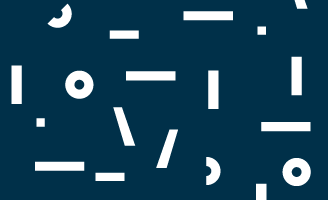
The rise of HR Tech for Global Mobility Management
Today there are a multitude of different technologies and app offerings to help you manage your global mobility programs, from point solutions to integrated end-to-end suites. With so many types of solutions, buzzwords, and jargon thrown around it can be difficult to understand what you’re actually getting.
To understand the tradeoffs of different tech solutions you must look at how and where an application is built, how it’s delivered to you, and how it’s maintained and upgraded.
Who is building your GMM technology solution and “how” is it built?
One of the primary concerns when investing in technology for managing your globally mobile employees is to understand who built the solution you’re using. Secondarily, one should be concerned with how is it built.
In House vs Outsourced development
When buying a piece of technology you want to know if the the company selling you this solution has developers (the engineers writing the code that powers the product) in house or if development is outsourced.
The gold standard for software development is that your software provider has their engineering team in house. With in house development teams, the team deeply understands the market they are serving and is focussed solely on building that one product to deliver value to you.
Companies with outsourced development leverage a third party to build the product you’re purchasing. That third party may be building other products for other industries/companies at the same time it is working on the product you’re purchasing. While outsourced development can typically be ramped up quickly and may cost a little less, the possible negatives include misinterpreting end user needs, inability to iterate quickly for the customer, and lack of support by your solution provider if problems come up.
Proprietary technology or dependant on a third party platform
The first point of “how” your solutions is built concerns whether it is built on it’s own proprietary platform or if it is built “on top of” another solution. In other words is the product you’re buying purpose built from the ground up for global mobility or is it leveraging an existing technology platform and repurposing it for your mobility program.
Proprietary technology, because it is built specifically for global mobility, is typically better suited for the nuances of managing global employees. There is typically more flexibility in how your solution provider can build their products since they’re not impacted by the constraints of the platform they’re building on top of.
A risk to any solution built on top of a third party’s platform is if that third party decides to discontinue that platform, or make changes to it that may negatively impact the functionality of the solution you’ve implemented.
Point Solution vs End-to-End Solution
Perhaps the easiest way to think about a point solution vs an end-to-end solution may be through an analogy using kitchens. Vendor A offers a point solution – they sell kitchen sinks. Vendor B offers an end-to-end solution – they sell you a furnished kitchen including the sink, cabinets, dishwasher, stove, refrigerator, pantry, etc. with all the pieces fitting together for optimal storage and usage of your kitchen.
A point solution may offer you exactly what you’re looking for for that one piece of the mobility puzzle, but it is not integrated into the the whole solution. That sink may not work with the counters or plumbing. With typical end-to-end solutions you benefit from knowing that all the pieces of the puzzle fit together, seamlessly share data and offer you greater efficiencies. The nice thing about integrated solutions is that they typically scale up and down based on your needs at the time. Going back to our kitchen analogy – you could order three sets of cabinets or one depending on the size of your current kitchen and needs at the time.

How are you accessing your technology solution?
This is a fairly straight forward consideration boiling down to if you want a solution that is on premises or hosted in the cloud.
On premise solutions have lost their popularity in the last decade in favor of cloud based solutions, including SaaS options. Cloud based solutions are hosted by your solution vendor and you access the software using the internet.
On premises solutions are on your own internal network. On premises solutions typically require you to be at work and connected to the same network (or leverage a virtual private network) as the servers hosting the software to access said software.
Cloud based (or cloud hosted) solutions may also be custom built and and require a large up front investment and time to build and implement, but typically when one touts that it is a “cloud based solution” it is touting that it is a multi-tenant, SaaS solution (more on multi-tenant and SaaS in the next section).
There are security considerations with the on prem vs. cloud based decision, with on prem considered to be marginally more secure. However most software providers hosting solutions in the cloud take extraordinary precautions and steps to safeguard your organization’s and employee’s data.
How is your solution maintained and upgraded?
When purchasing a GMM solution you want to make sure it can easily be upgraded and implemented. The global workforce and business landscape is always changing and you need a solution that evolves along with it. Inevitably this consideration is largely impacted by the first two considerations we examined – who/how is your solution built and how you access it.
Today SaaS solutions are the most prominent (think Salesforce, Workday, SuccessFactors, Jobvite, etc.). Saas solutions leverage multi-tenancy and cloud hosting to deliver your software with regular, continuous improvements and significant cost savings. Multi-tenant solutions (like Workday and Successfactors) tout the configurability of their solution vs the customizability of it. It is an important distinction as customizability implies that custom code and product features will be released just to you. Multi-tenant solutions share the same core code base and the configurability is baked into that core code base.
Making the right decision for your needs.
Only you can determine what type of GMM technology is right for your organization. Based on the scale, complexity, and nature of your global mobility program selecting a custom built, on premises solution may be the right answer. But before you make any decision, asking the right questions to understand how/who builds your solution, how you will access it, and how it is updated and maintained will arm you with accurate tradeoffs between any potential solutions for your program.

